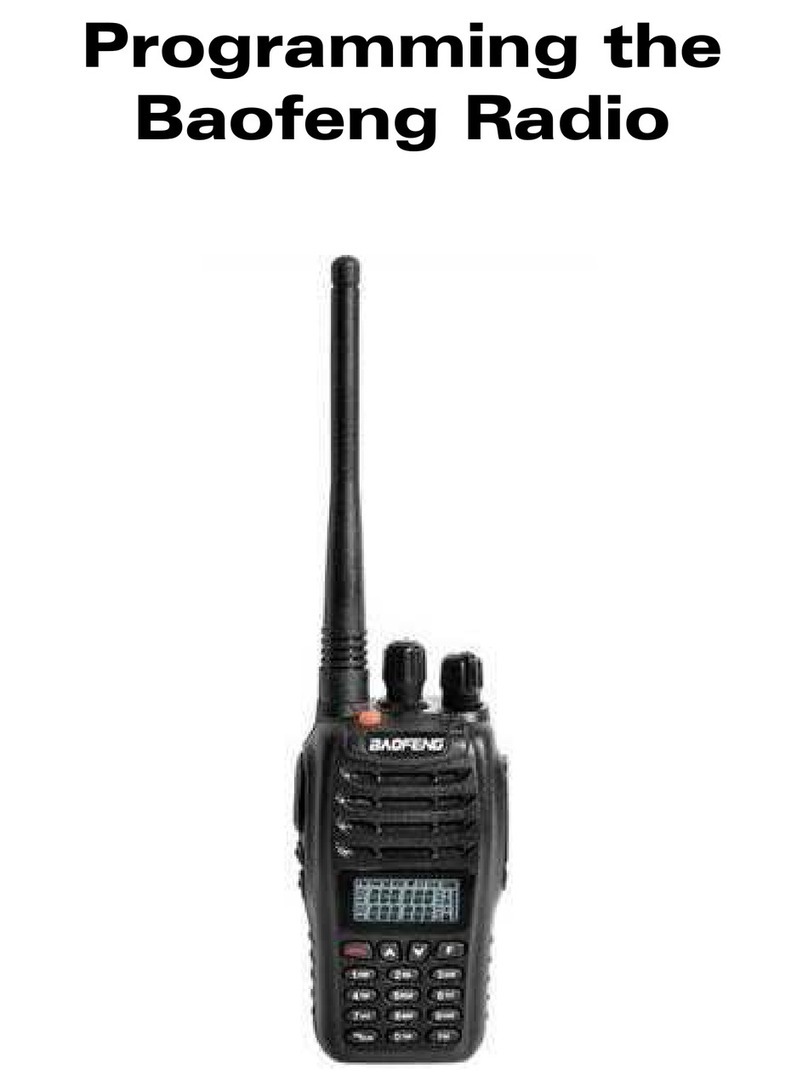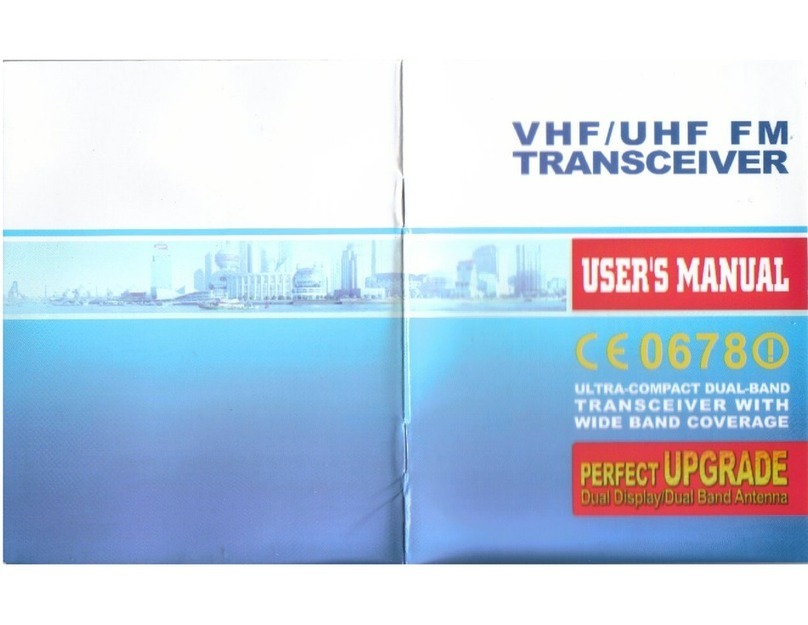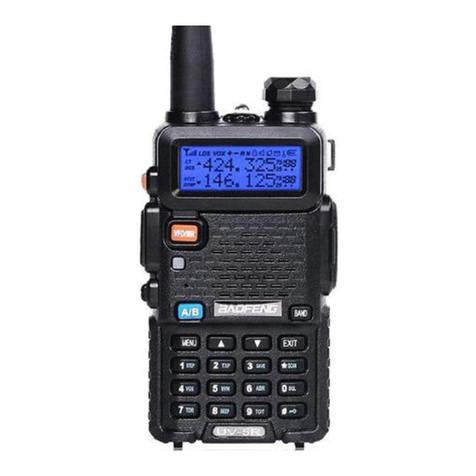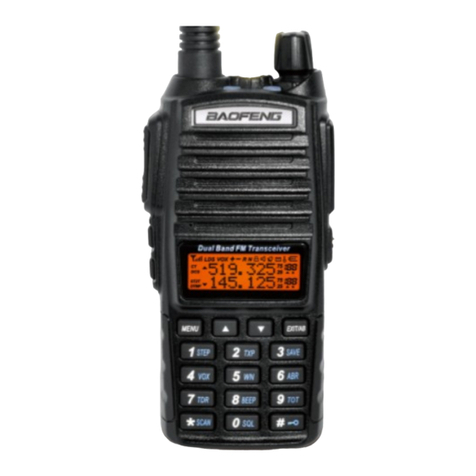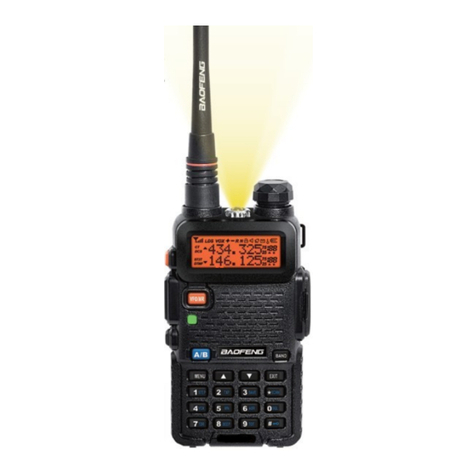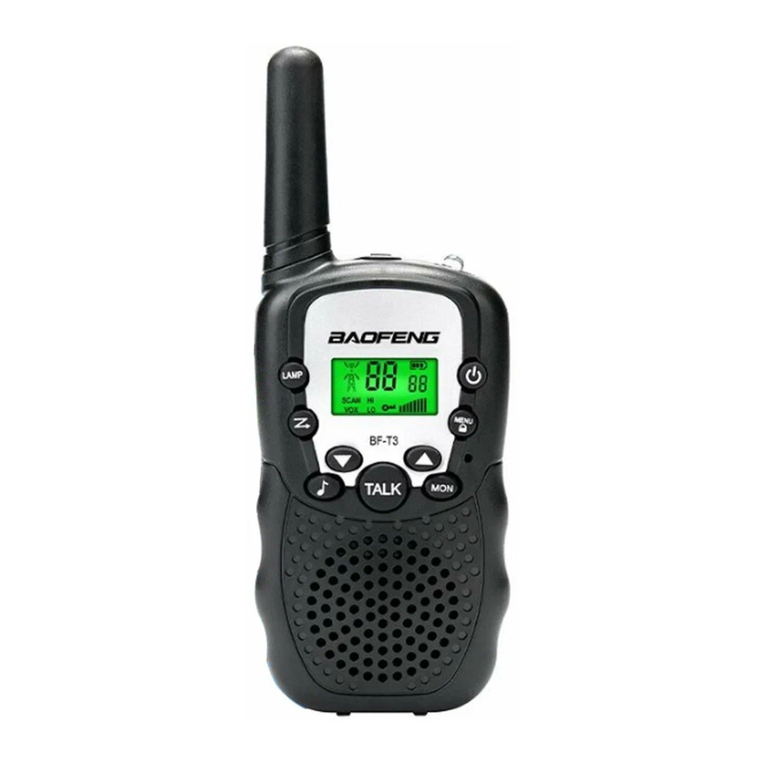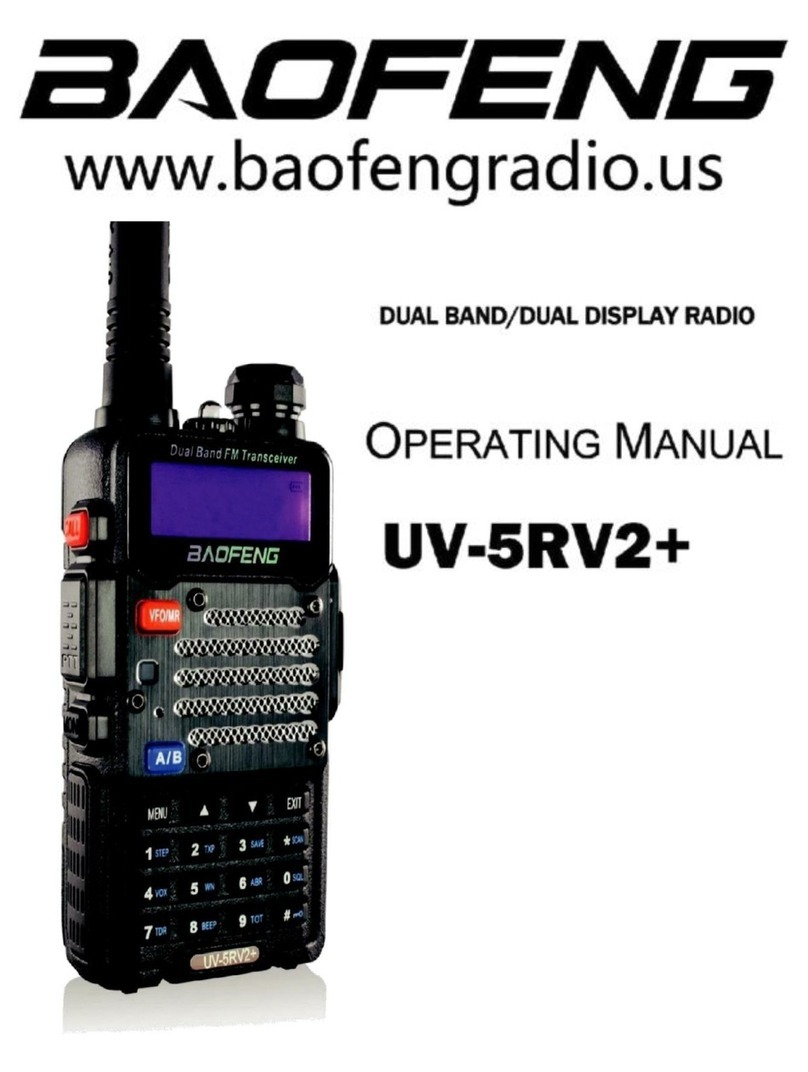
●Shift value for transmit. Usually 600 kHz for 2 meters, 1.6 or 5 MHz for 70 cm.
Make sure you are in VFO mode for 2 meters. Display should show NO channel number. In
case, press/hold U/V key long enough to get there -- it will cycle through memory mode, UHF,
VHF.
To set the receive frequency, lift knob and rotate to get desired value. For 1 MHz steps (saves
some time!), press and release function key, then rotate knob by 1 MHz increments. Do that
same sequence again to get back into normal frequency setting mode.
From here on, you need to set some menu items. The sequence for setting menu items is:
●Press Menu key.
●Rotate knob to desired menu item.
●Press U/V key to select that menu for alteration.
●Rotate knob to desired value.
●Press the PTT button to lock in the desired value.
All menu items are set up this way.
You may need to set the step value to 5 or 10 kHz, as the default is 12.5 kHz (12.5 kHz is the
standard in IARU Region 1, that is Europe and Africa). There is a menu item for this.
Select the desired PL tone from the TX tone menu. See the above sequence for setting up a
menu selection. No PL tone is required for simplex channels.
Set the transmit offset to 600 kHz, 1.6 or 5 MHz, as appropriate. Check your repeater directory
for non-standard offsets. For 1 MHz steps you can use the Function tip described above.
Set shift to "+", or "-" as appropriate. For simplex, the value is zero.
Now, test your settings. Pressing PTT should bring up your repeater. If not, check you settings.
Just the receive frequency should be enough to hear your repeater. If you have another HT
properly programmed, use that to key up the repeater for testing. I know, "kechunking" the
repeater is bad manners, but....
If all is well, then store your setup in memory. Press F/A button on side, then U/V. Rotate knob
to desired channel (you should have made a list), press U/V again to store the channel.
Repeat for all other channels. If the PL tone, shift, or offset values are the same, you don't need
to change them. This is why a list is useful. Keep a copy of the channel list with your HT, as
there are no channel labels with the Baofeng, such as are found with the Wouxun and other
HTs.
How does the programming software work?
UV-3R FAQ v. 2012-01-27 Page 10
